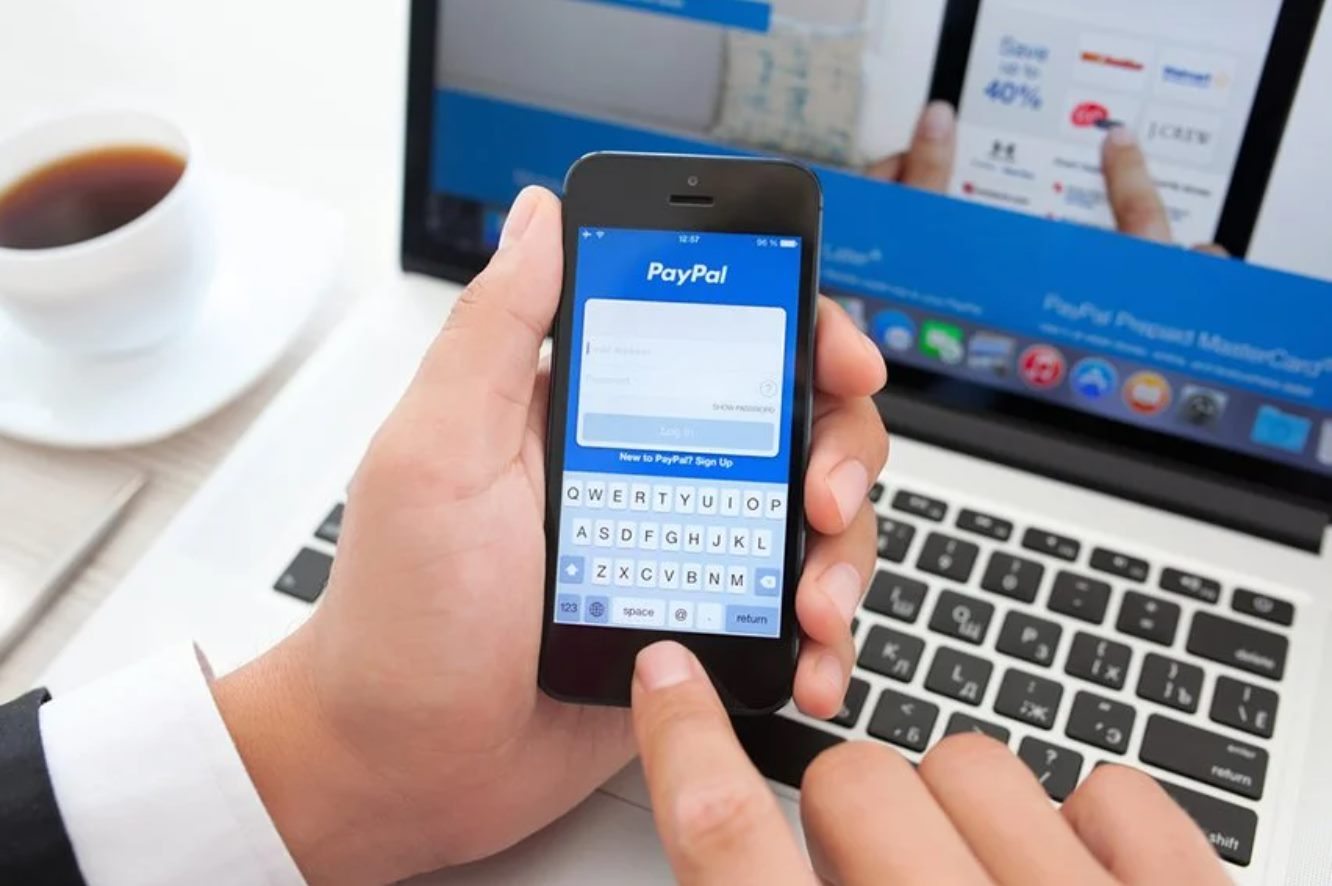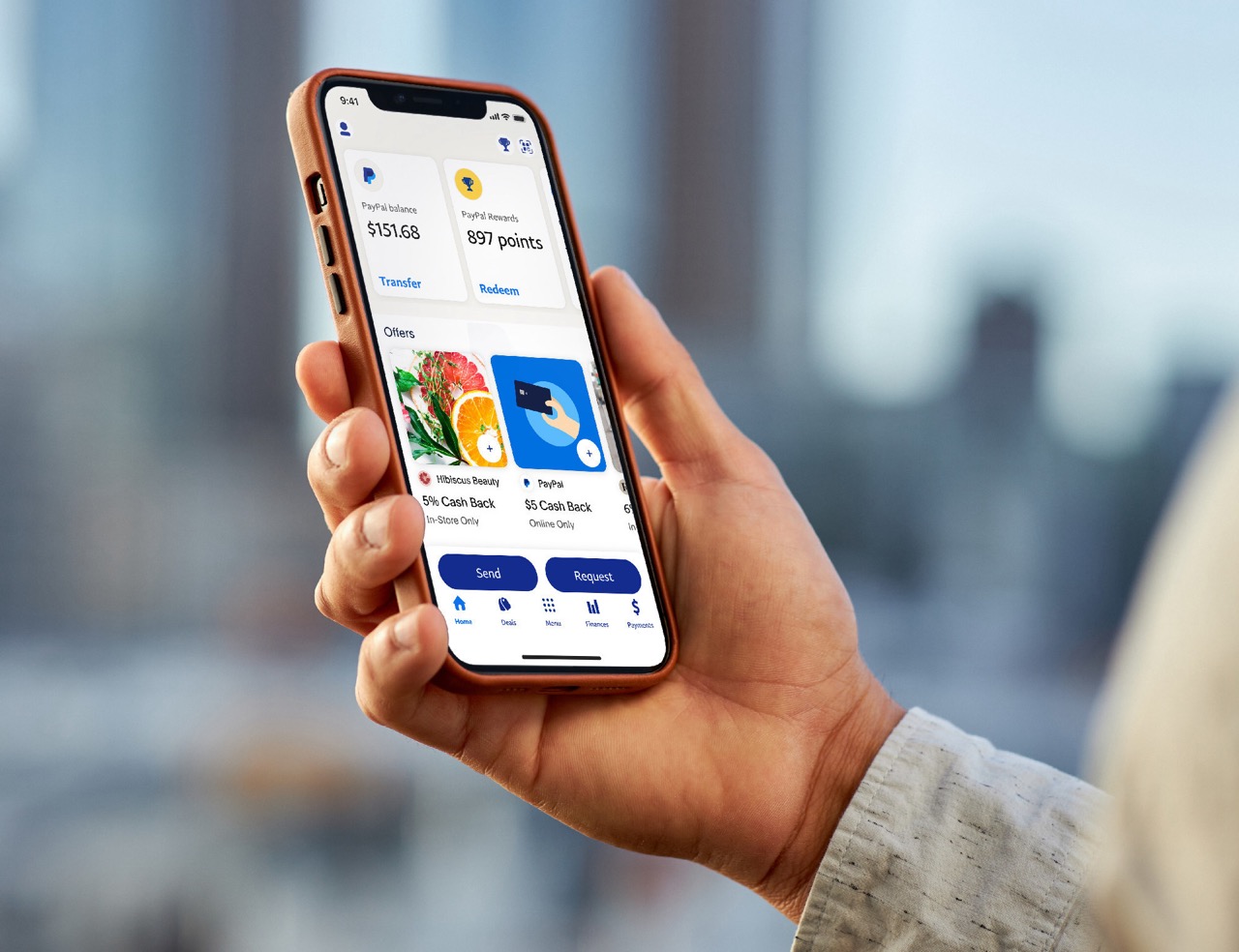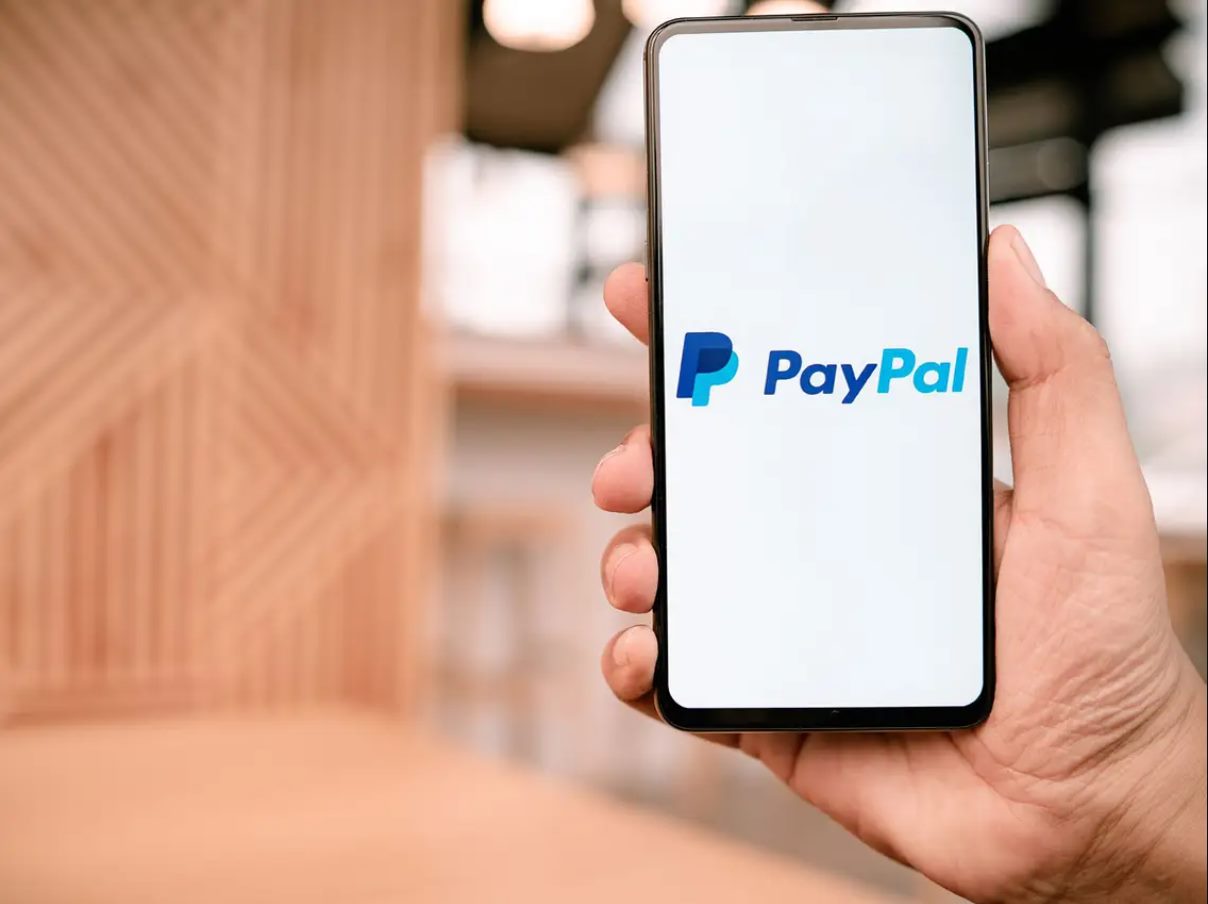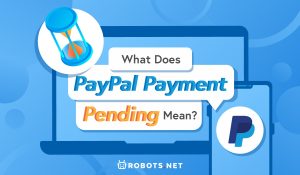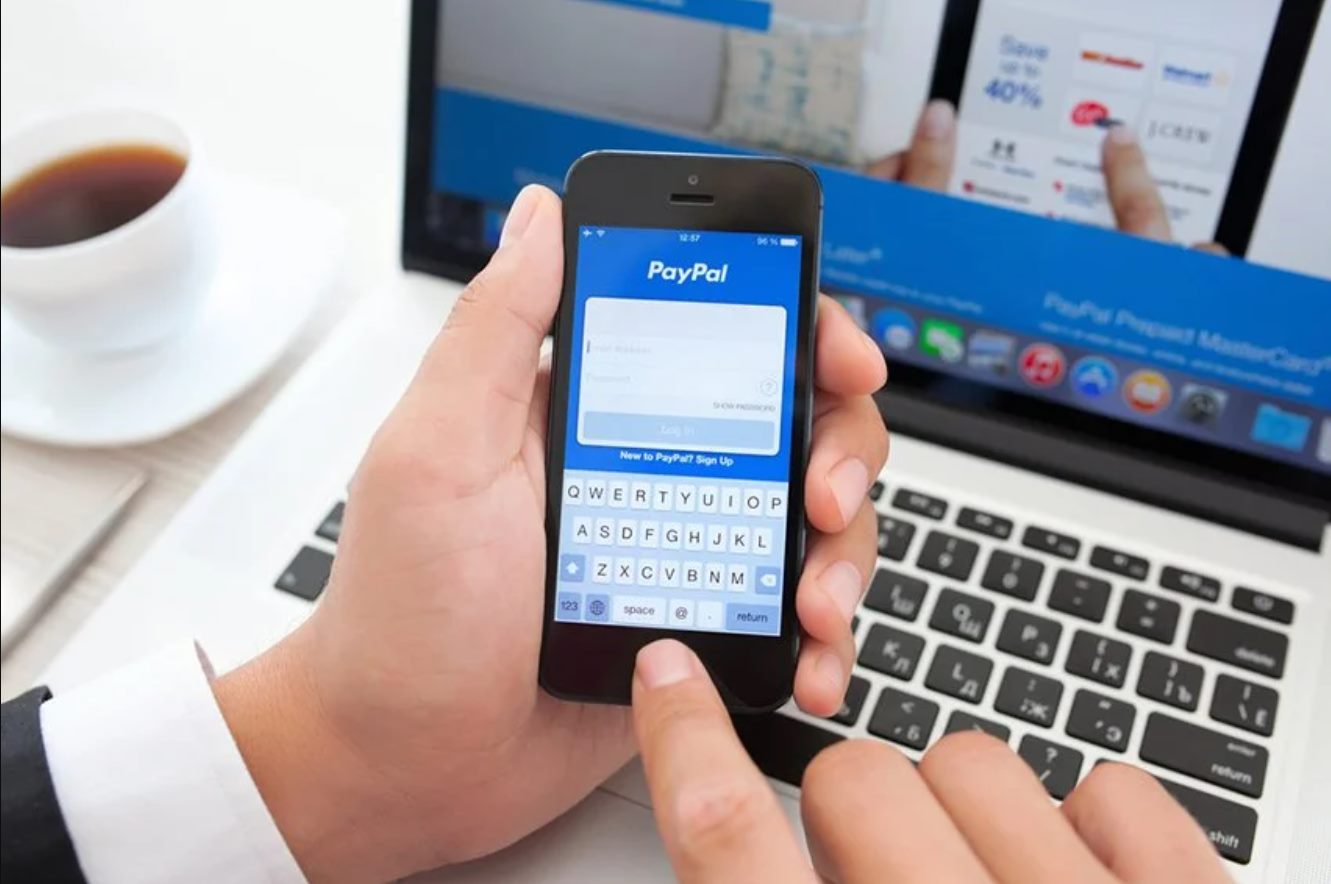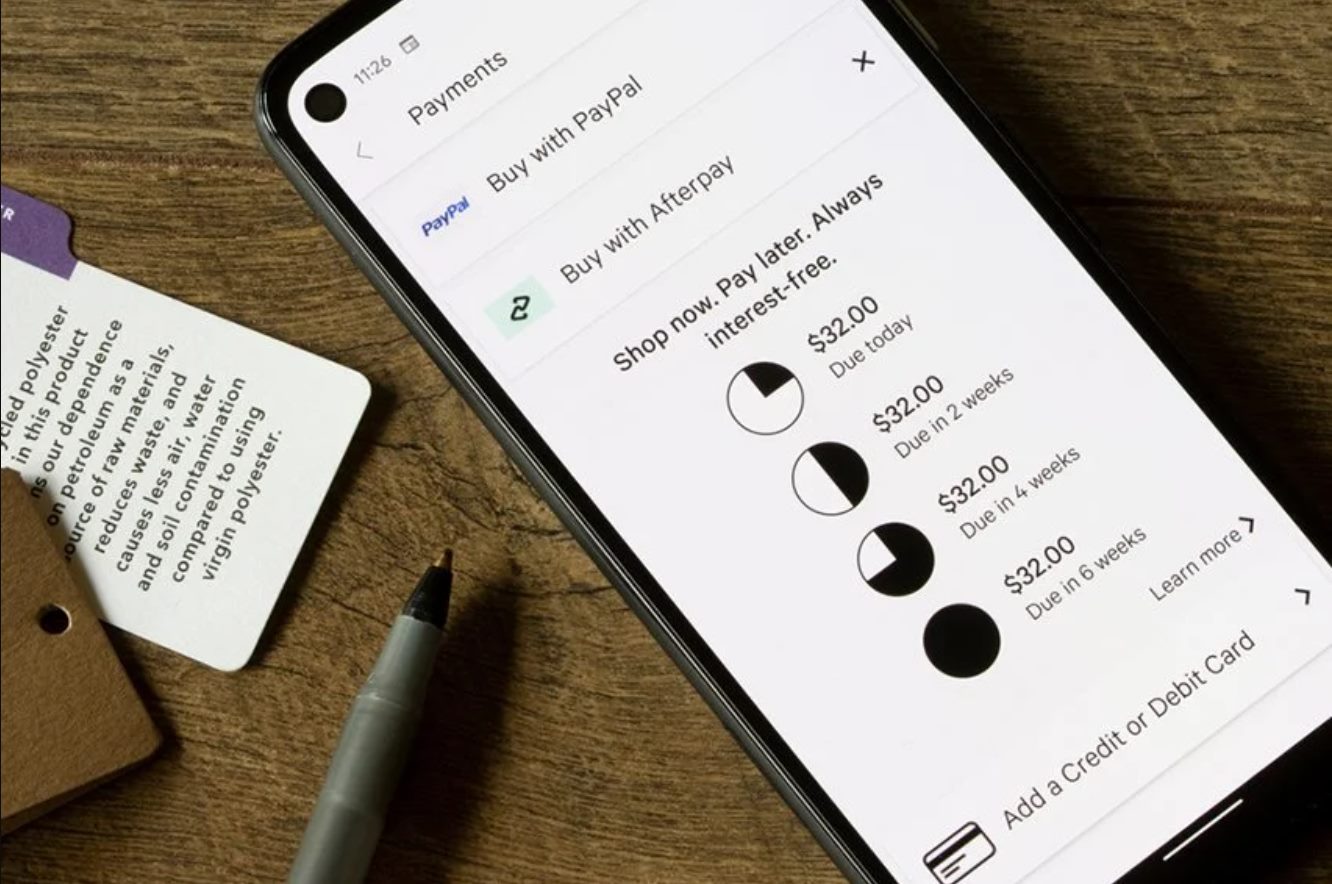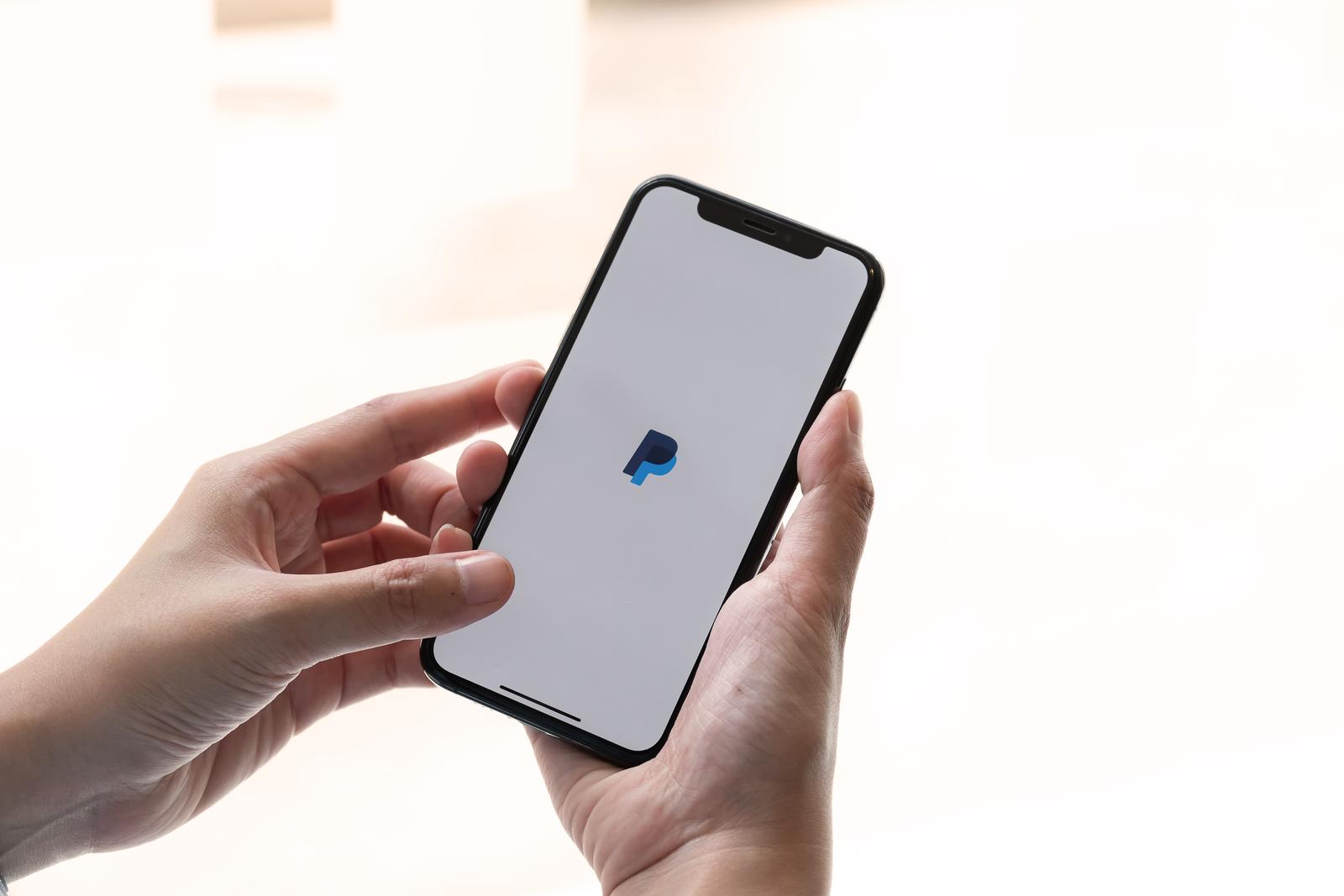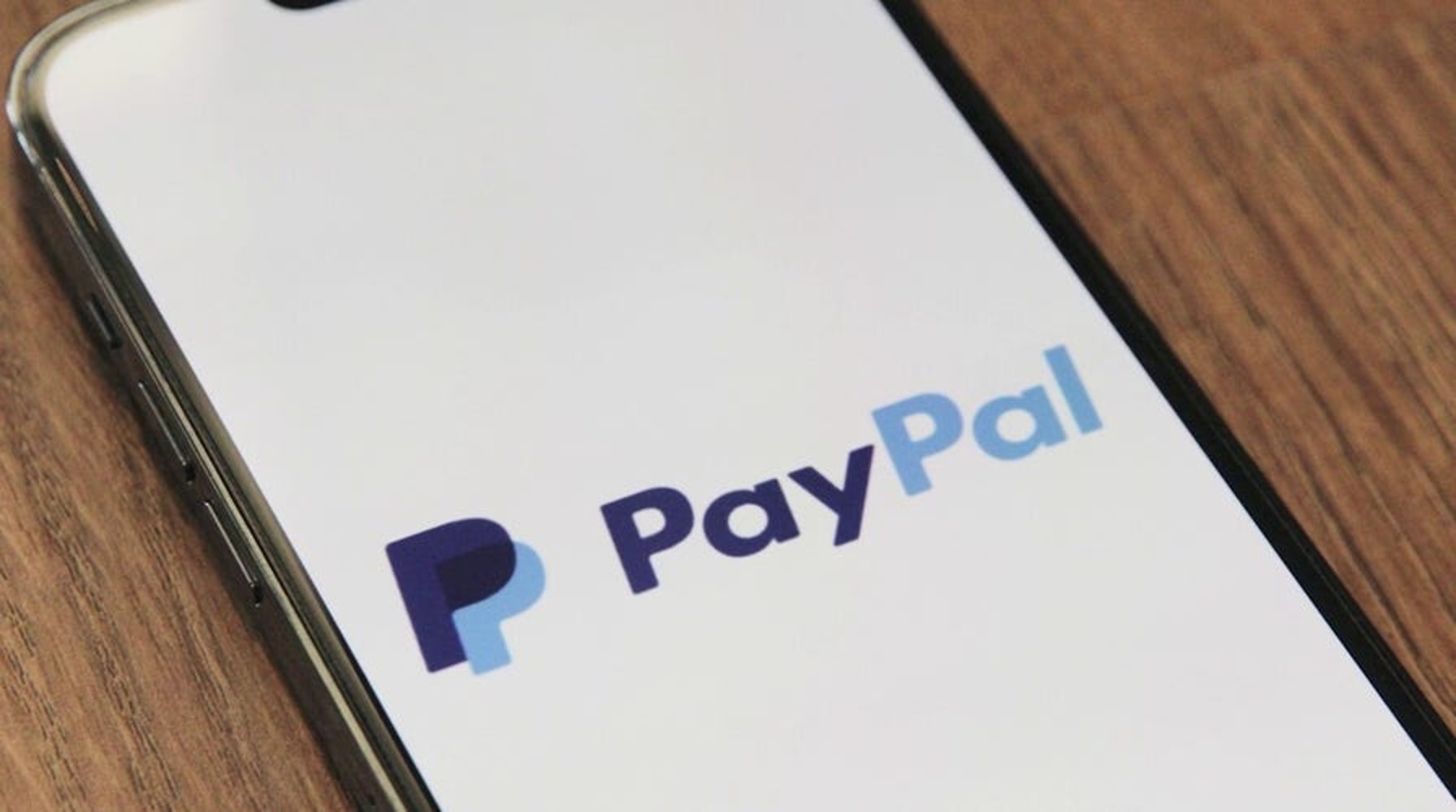Introduction
Welcome to our comprehensive guide on how to get a refund on PayPal. PayPal is a widely used online payment platform that provides convenience and security in making online transactions. However, there may be occasions when you encounter issues with a purchase and need to request a refund. Fortunately, PayPal offers a variety of options and protections to help you navigate these situations.
In this guide, we will walk you through the process of obtaining a refund on PayPal. We will cover everything from understanding PayPal’s refund policies to initiating a chargeback through your credit card company. Whether you’ve received a faulty product, didn’t receive your item, or experienced another issue, we’ve got you covered.
Before we delve into the specific steps of the refund process, it’s important to note that PayPal’s refund policies can vary depending on the type of transaction and the seller’s policies. It is crucial to review the terms and conditions of the seller’s refund policy before making a purchase, as this will dictate your options for requesting a refund.
Additionally, it’s worth mentioning that while PayPal provides safeguards for buyers, it’s always best to try to resolve any issues directly with the seller first. This can help expedite the refund process and potentially save you time and effort. However, if you’re unable to reach a satisfactory resolution with the seller, PayPal offers mechanisms to escalate the case and receive assistance.
Now that we’ve set the stage, let’s dive into the various steps you can take to initiate a refund on PayPal. By following these steps, you’ll be well-equipped to navigate any refund situation that may arise during your online shopping experiences.
Understanding PayPal’s refund policies
Before requesting a refund on PayPal, it’s essential to have a clear understanding of their refund policies. PayPal has specific guidelines in place to protect both buyers and sellers, ensuring a fair and transparent process for resolving disputes.
Firstly, PayPal distinguishes between two types of transactions: goods and services, and personal payments. Goods and services transactions are typically related to online purchases, while personal payments involve sending money to friends or family.
When it comes to goods and services transactions, PayPal generally allows buyers to request a refund within 180 days (approximately six months) from the date of purchase. This extended timeframe provides some flexibility if you encounter any issues with your purchase after an extended period.
However, it’s worth noting that PayPal’s refund policy may be subject to certain conditions and exceptions. For example, if the seller has a specific return policy outlined in their listing, you may need to adhere to those guidelines for a refund. Additionally, PayPal may not cover certain types of purchases, such as real estate or vehicles.
It’s crucial to review the terms and conditions of PayPal’s Buyer Protection program. This program aims to safeguard buyers by offering refunds for eligible transactions that meet specific criteria. For instance, the item may be significantly not as described, or the buyer did not receive the item at all.
Keep in mind that PayPal will require supporting evidence to substantiate your claim for a refund. This could include photographs, correspondence with the seller, shipping and tracking information, or any other relevant documentation that proves your case.
In some cases, PayPal may also put a hold on funds or initiate a funds recovery if a dispute arises. This means that the money in question will be temporarily held until the dispute is resolved. PayPal acts as a mediator in these situations, aiming to reach a fair resolution for both parties involved.
Understanding PayPal’s refund policies is crucial to ensure you are aware of your rights and options as a buyer. By familiarizing yourself with these guidelines, you’ll be better equipped to navigate the refund process and make informed decisions when requesting a refund on PayPal.
Checking eligibility for a refund
Before proceeding with a refund request on PayPal, it’s important to check your eligibility. PayPal has specific criteria that must be met in order to qualify for a refund. By verifying your eligibility, you can save time and avoid any unnecessary steps in the refund process.
The first step in checking eligibility is to ensure that the transaction meets PayPal’s guidelines for refundable transactions. PayPal typically allows refunds for goods and services transactions, but it’s important to note that certain types of transactions, such as personal payments, may not be eligible for refunds.
Next, review the timelines set by PayPal for refund requests. In general, PayPal allows buyers to submit refund requests within 180 days (approximately six months) from the date of purchase. However, it’s worth noting that each case is reviewed individually, so contacting PayPal as soon as you can is recommended.
Another factor to consider is whether the seller has a specific return policy. Some sellers may have their own return guidelines, which buyers must adhere to in order to qualify for a refund. It’s important to familiarize yourself with the seller’s return policy before making a purchase to understand your rights and responsibilities.
To check your eligibility for a refund on PayPal, follow these steps:
- Log in to your PayPal account.
- Navigate to the “Activity” tab, which displays your transaction history.
- Locate the transaction for which you wish to request a refund.
- Click on the transaction to view the details.
- Review the transaction details to ensure it meets PayPal’s refund eligibility criteria.
If the transaction is eligible for a refund, you can proceed with the refund request. However, if the transaction does not meet the necessary criteria, you may need to consider alternative options, such as reaching out to the seller directly to find a resolution.
By checking your eligibility for a refund on PayPal, you can determine whether you meet the necessary criteria to proceed with the refund process. It’s important to carefully review the transaction details and adhere to any specific return policies set by the seller to maximize your chances of a successful refund request.
Requesting a refund through the PayPal resolution center
If you’ve determined that you’re eligible for a refund and have been unable to resolve the issue directly with the seller, the next step is to request a refund through the PayPal resolution center. The resolution center is a platform provided by PayPal to facilitate communication and dispute resolution between buyers and sellers.
To initiate the refund request, follow these steps:
- Log in to your PayPal account.
- Click on the “Resolution Center” link located at the top of the page
- Select “Report a Problem” and choose the appropriate reason for the refund request. PayPal provides a list of common issues, such as “Item not received” or “Significantly not as described.”
- Enter all relevant details about the transaction, including the date of purchase, the amount, and any communications you’ve had with the seller. Be as detailed and specific as possible to support your claim.
- Attach any supporting documentation, such as photographs, screenshots, or relevant emails or messages exchanged with the seller.
- Submit the request and wait for PayPal to review your case.
Once you’ve submitted the refund request, PayPal will review the information provided and contact the seller to gather their perspective. They may also ask for additional documentation or evidence to support your claim. It’s important to respond promptly to any requests from PayPal to ensure a smooth resolution process.
During the resolution process, PayPal may also provide guidance on possible ways to resolve the issue with the seller. This could include mediation, negotiation, or any other suitable methods to reach a mutually acceptable solution.
Keep in mind that the duration of the resolution process can vary depending on the complexity of the case and the responsiveness of the parties involved. PayPal aims to resolve cases within a reasonable timeframe, but it’s essential to be patient and follow up as necessary.
By requesting a refund through the PayPal resolution center, you can leverage their platform to communicate your concerns to the seller and escalate the issue if needed. This formal process can help facilitate a resolution and provide you with the support and protection offered by PayPal’s dispute resolution mechanisms.
Providing necessary documentation for a refund
When requesting a refund through PayPal, it’s crucial to provide the necessary documentation and evidence to support your claim. Clear and comprehensive documentation can significantly strengthen your case and increase the chances of a successful refund.
Here are some essential tips for providing the required documentation for a refund:
- Keep records of all transaction-related information: This includes the date of purchase, the item description, the seller’s contact information, and any order numbers or reference numbers associated with the transaction. Having these details readily available will help streamline the refund process.
- Save copies of all communications: If you’ve had any correspondence with the seller regarding the purchase, it’s crucial to keep copies of those conversations. This can include emails, messages through the PayPal platform, or any other form of communication that demonstrates your attempts to resolve the issue with the seller.
- Take photographs or screenshots: If the issue relates to a physical item that is damaged or significantly different from what was described, take clear photographs or screenshots as evidence. Visual documentation can be powerful in supporting your refund request.
- Provide shipping and tracking information: If the item was shipped, make sure to have the shipping and tracking information on hand. This can help verify whether the item was delivered or returned to the seller, depending on the nature of the issue.
- Write a detailed description of the problem: Clearly explain the problem you encountered with the purchase. Be specific about what was wrong, why it was unacceptable, and how it deviated from the seller’s description or your expectations. The more detailed and specific you are, the stronger your case will be.
When submitting the refund request through the PayPal resolution center, make sure to attach the relevant documentation and evidence to support your claim. PayPal provides options for uploading files, so you can include photographs, screenshots, or any other supporting materials directly within the refund request.
It’s important to note that the documentation requirements can vary depending on the nature of the issue and the response from the seller. PayPal may request additional documentation or information to further evaluate your case. Be prepared to provide any further evidence requested by PayPal promptly.
By providing thorough and credible documentation, you enhance the clarity and validity of your refund request. This demonstrates your diligence as a buyer and strengthens your position when seeking a resolution through PayPal’s refund process.
Communicating with the seller for a resolution
When experiencing an issue with a purchase on PayPal, it’s important to reach out to the seller directly to attempt to resolve the problem before escalating the matter further. Open communication can often lead to a quicker and more satisfactory resolution.
Here are some tips for effectively communicating with the seller:
- Stay calm and polite: It’s essential to maintain a respectful and professional tone when communicating with the seller. Avoid using aggressive or confrontational language, as this can hinder productive communication.
- Contact the seller promptly: As soon as you identify an issue with your purchase, initiate contact with the seller. Timely communication increases the likelihood of a swift resolution.
- Clearly explain the problem: Provide a detailed description of the issue you encountered with the purchase. Clearly articulate how it deviates from the seller’s description or your expectations. The more specific you are, the better the seller can understand the problem.
- Attach relevant documentation: If you have any supporting documentation, such as photographs, screenshots, or communication logs, include them in your communication with the seller. These materials can provide clarity and make the situation more tangible.
- Propose a fair solution: Offer a reasonable and fair solution that you believe would resolve the issue. This demonstrates your willingness to work towards a resolution and can facilitate negotiations with the seller.
- Maintain a record of all communications: Keep copies of all emails, messages, or any other forms of communication exchanged with the seller. This documentation is crucial if you later need to escalate the issue to PayPal for further assistance.
- Follow up as needed: If the seller does not respond or fails to address the problem adequately, follow up with gentle reminders. Persistent and consistent communication can demonstrate your commitment to reaching a resolution.
Remember, the seller may be unaware of the issue or genuinely willing to resolve it. Open and respectful communication can help you navigate any misunderstandings and find common ground.
However, if you have exhausted your attempts to communicate with the seller or they are unresponsive or uncooperative, it may be necessary to proceed with the next steps, such as escalating the issue through the PayPal resolution center.
By initiating direct communication with the seller, you demonstrate your willingness to resolve the issue amicably. This approach can often lead to a mutually satisfactory resolution without the need for further intervention.
Escalating a case to PayPal’s customer service
If your attempts to communicate with the seller have been unsuccessful or if you are unable to reach a satisfactory resolution, you can escalate your case to PayPal’s customer service for further assistance. PayPal’s customer service is available to help resolve disputes and provide guidance throughout the refund process.
To escalate a case to PayPal’s customer service, follow these steps:
- Log in to your PayPal account.
- Navigate to the “Resolution Center” located at the top of the page.
- Select the open dispute or ongoing case that you want to escalate.
- Click on the “Escalate to PayPal” button to initiate the escalation process.
- Provide all relevant information about the case and explain why you are escalating it. Be clear, concise, and include any supporting documentation you have.
- Submit the request to PayPal and wait for their response.
Once you have escalated the case, PayPal’s customer service team will review the information provided and take appropriate action. They may contact both you and the seller for additional details or attempt to mediate a resolution between the parties.
It’s important to note that the resolution time can vary depending on the complexity of the case and the responsiveness of the parties involved. PayPal aims to resolve disputes as quickly and fairly as possible.
During the resolution process, it’s crucial to promptly respond to any requests or inquiries from PayPal. Failure to provide the necessary information may delay the resolution and prolong the refund process.
By escalating the case to PayPal’s customer service, you involve a neutral third party to evaluate the situation and provide an unbiased assessment. Their expertise and mediation skills can help facilitate a fair and satisfactory resolution for both parties involved.
Keep in mind that PayPal’s customer service should be considered as a last resort in cases where direct communication with the seller has been unproductive or unsuccessful. Initiating the escalation process should be carefully considered after all other reasonable attempts to resolve the issue have been exhausted.
Initiating a chargeback through your credit card company
If you’re unable to obtain a refund through PayPal’s resolution process or if you believe that your situation warrants additional action, you may consider initiating a chargeback through your credit card company. A chargeback is a consumer protection mechanism provided by credit card issuers that allows you to dispute a transaction and potentially receive a refund.
While PayPal offers its own dispute resolution process, initiating a chargeback involves working directly with your credit card company to reverse the transaction. Here’s how you can initiate a chargeback:
- Gather all relevant evidence: Collect all documentation related to the transaction, including receipts, emails, and any other communication you’ve had with the seller or PayPal regarding the issue.
- Contact your credit card issuer: Reach out to your credit card company’s customer service department and inform them about the situation. Provide them with a detailed explanation of the problem and the attempts you’ve made to seek a resolution through PayPal.
- Submit a chargeback request: Follow the instructions provided by your credit card company to submit a chargeback request. Provide all the requested information, including the transaction details and the evidence you’ve gathered to support your claim.
- Cooperate with the investigation: Your credit card company will initiate an investigation into the transaction. They may request additional documentation or information from you to further assess the validity of your claim. Cooperate fully throughout this process.
- Wait for the outcome: The credit card company will review all the information provided and make a decision based on their findings. This process may take some time, so be patient and follow up as necessary.
It’s important to note that initiating a chargeback should be considered as a last resort. This is because PayPal’s dispute resolution process and buyer protection program are specifically designed to handle transaction disputes. However, in situations where you believe you’ve exhausted all available options and have a valid claim, a chargeback can provide an additional avenue for seeking a refund.
Keep in mind that chargeback policies and procedures may vary depending on your specific credit card issuer and the terms of your credit card agreement. Be sure to review the terms and conditions or contact your credit card company directly to understand the specific process and requirements for initiating a chargeback.
By initiating a chargeback through your credit card company, you involve another layer of protection to potentially resolve the issue and obtain a refund. However, it’s crucial to use this option responsibly and ensure that you have a valid claim before proceeding with a chargeback.
Understanding PayPal’s buyer protection program
PayPal offers a buyer protection program to safeguard buyers and provide them with added peace of mind when making online purchases. The buyer protection program is designed to offer financial protection and assistance in resolving transaction disputes.
Here are the key aspects of PayPal’s buyer protection program that you should be aware of:
Eligibility criteria: To qualify for PayPal’s buyer protection, you must meet certain criteria. These include using PayPal as your payment method for eligible transactions, making a purchase from a seller who is based in a PayPal-supported country, and filing a dispute within the specified timeframe.
Covered transactions: PayPal’s buyer protection program generally covers purchases of physical goods where there is a problem or discrepancy with the item. This can include situations where the item is significantly not as described, counterfeit, or not received at all. Certain types of transactions, such as vehicles, real estate, or custom-made items, may be excluded from coverage.
Dispute resolution process: If you encounter an issue with a purchase, PayPal provides a resolution process for buyers to report the problem. This involves communicating with the seller, providing evidence to support your claim, and allowing the seller an opportunity to address the issue. If a resolution cannot be reached, you can request PayPal’s intervention.
Refund and protection coverage: If your claim is approved, PayPal may refund the full purchase price plus shipping costs. They will review the evidence and information provided by both parties to make a fair decision. The refund will be made to your PayPal account, and you can withdraw the funds or use them for future purchases.
Timeframe for filing a dispute: It’s important to file a dispute within the specified timeframe to be eligible for PayPal’s buyer protection. Generally, you have 180 days (approximately six months) from the date of purchase to file a dispute. However, it’s best to initiate the process as soon as possible to ensure timely resolution.
Additional protection for unauthorized transactions: PayPal also provides buyer protection in cases of unauthorized transactions, where someone else uses your PayPal account without your permission. In such cases, PayPal may cover the full amount of the unauthorized transaction and work towards resolving the issue.
It’s important to note that PayPal’s buyer protection program has specific terms and conditions that you should review to understand the full extent of your coverage. These terms may vary depending on your country of residence and the specific transaction details.
By understanding PayPal’s buyer protection program, you can take advantage of the additional safeguards and options available to resolve transaction disputes. The program aims to provide buyers with a level of confidence and security when using PayPal for their online purchases.
How to prevent the need for refunds on PayPal
While PayPal provides options and protections for requesting refunds, it’s always best to try and prevent the need for refunds in the first place. By taking some proactive measures, you can minimize the chances of encountering issues with your purchases. Here are some tips to help you prevent the need for refunds on PayPal:
- Research the seller: Before making a purchase, take the time to research the seller. Read their reviews and ratings, check their return and refund policies, and verify their reputation. This can give you insight into their reliability and help you make informed purchasing decisions.
- Read the product description carefully: Pay close attention to the product description, including the specifications, dimensions, and condition. Make sure it aligns with your expectations and requirements.
- Verify seller’s contact information: Ensure that the seller’s contact information is accurate and legitimate. This can be helpful if you need to reach out to them for any reason.
- Ask questions before purchasing: If you have any doubts or uncertainties about the product, don’t hesitate to ask the seller. Clear communication can help prevent misunderstandings and ensure that you’re making an informed decision.
- Check shipping and delivery details: Review the shipping and delivery information provided by the seller to understand the estimated delivery time and any associated costs. This can help you track your shipment and identify any delays or issues early on.
- Keep records of transactions: Save copies of all transaction-related information, including receipts, confirmation emails, and shipping details. Having these records readily available can be helpful if you need to reference them later or file a dispute.
- Inspect the item upon receipt: When you receive the item, carefully inspect it to ensure it matches the description and is in the expected condition. If there are any issues, contact the seller promptly to address the problem.
- Communicate with the seller: If you encounter any issues or have concerns with your purchase, communicate with the seller as soon as possible. Clear and prompt communication can often help resolve problems without the need for a refund.
- Leave appropriate feedback: After completing a transaction, leave feedback for the seller. This not only informs other buyers about your experience but also provides valuable feedback to the seller, encouraging them to improve their services.
By following these preventive measures, you can minimize the likelihood of encountering issues that necessitate refunds. Remember, it’s always better to take precautions and make informed decisions to ensure a smooth and satisfactory online shopping experience.
Conclusion
Obtaining a refund on PayPal doesn’t have to be a daunting process with the right knowledge and approach. By understanding PayPal’s refund policies, checking your eligibility, and utilizing the resolution center, you can navigate the refund process more effectively. Providing necessary documentation, communicating with the seller, and escalating the case when necessary are important steps in seeking a resolution. If all else fails, initiating a chargeback through your credit card company can provide an additional recourse.
However, it’s always best to prevent the need for refunds in the first place. Conducting research, reading product descriptions carefully, and communicating with sellers prior to purchasing can help avoid potential issues. Keeping records of transactions, inspecting items upon receipt, and leaving appropriate feedback can also contribute to a smoother overall buying experience.
Remember that PayPal’s buyer protection program is there to support you, and their customer service team can provide guidance and assist in resolving disputes if needed. It’s important to be proactive, diligent, and patient throughout the refund process, and to escalate the matter further only when necessary.
With these guidelines, you can navigate the world of refunds on PayPal with confidence, ensuring that you can resolve any issues that may arise and achieve a satisfactory outcome. Happy shopping!







